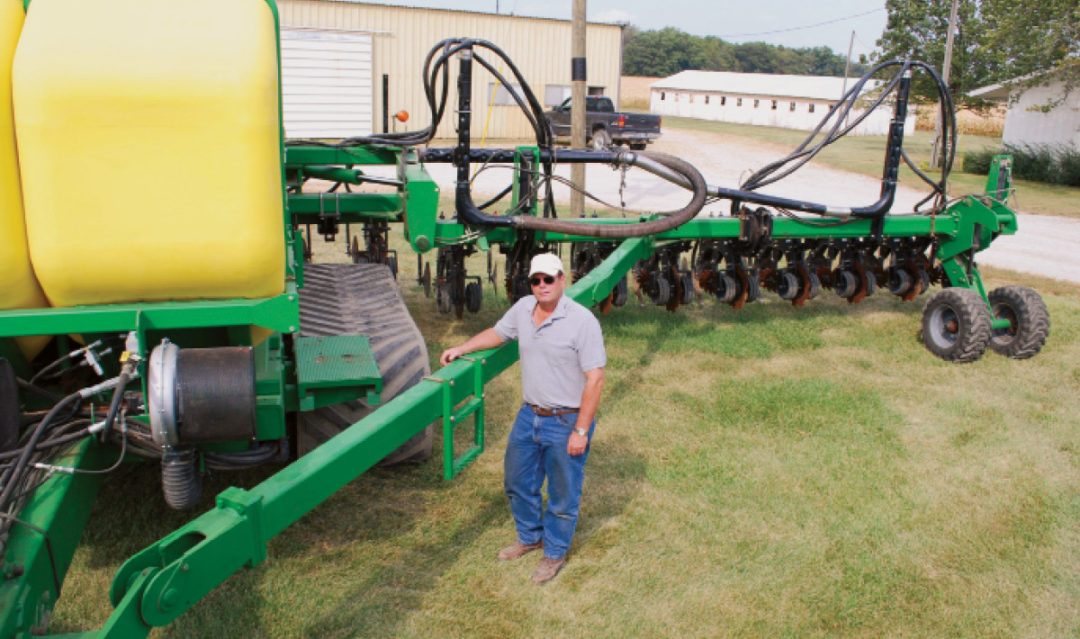No-Till Farmer
Get full access NOW to the most comprehensive, powerful and easy-to-use online resource for no-tillage practices. Just one good idea will pay for your subscription hundreds of times over.

Just down the road from the machine shed of Pennville, Ind., strip-tiller Shane Houck, a tan boulder stands halfway between the edge of the cornfield and the county blacktop. Cut into the top of the rock is the inscription, “Houck Homestead Farm 1838.”
The muted color of the rock mirrors the quiet personality of Houck who has designed durable, innovative equipment that has helped no-tillers and strip-tillers, alike.
Twenty years ago, Houck created a hitch that allowed no-tillers to run two John Deere 750 no-till drills side-by-side, seeding a 30-foot-wide swath instead of just 15 feet. More than 2,500 of Houck Hitches have been sold worldwide, he says. About 7 years ago, Houck starting making a front-folding frame for fall strip-till.
Houck started using conservation tillage in the 1980s. He ridge-tilled from the mid-1980s to 1990 and then began no-tilling corn and soybeans.
“We have tight soils with lots of clay and poor drainage,” Houck says. “These soils tend to warm up slowly in the spring. And managing residue was a struggle.”
Houck became interested in strip-tilling after seeing a farmer in the area use the practice. In the fall of 2003, Houck put 12 of Yetter Mfg. Co’s row units on a toolbar and started strip-tilling. Within half a day, the toolbar bent in the tough, tight soil. Houck set out to build a tougher frame.
Over the next 5 years, Houck designed and built four front-folding toolbars. He made them 60 feet wide for productive capacity.
He put…